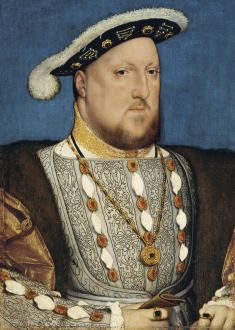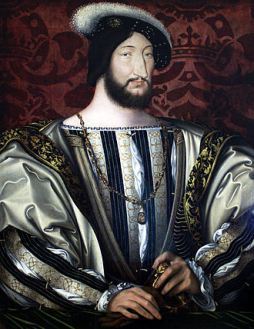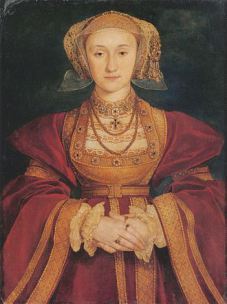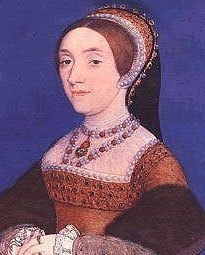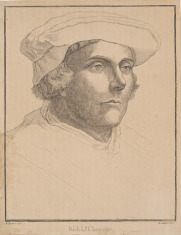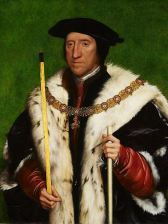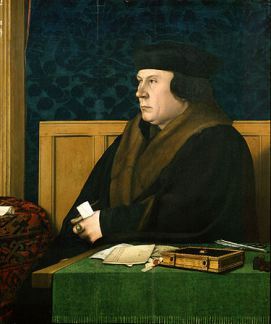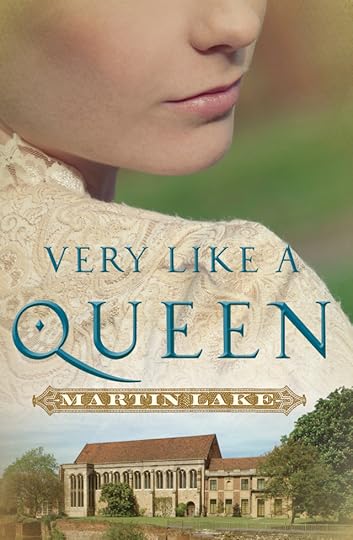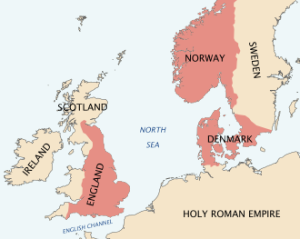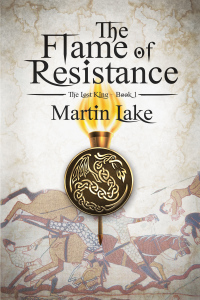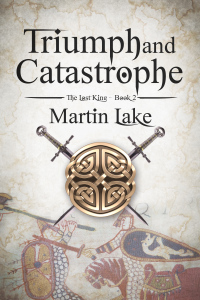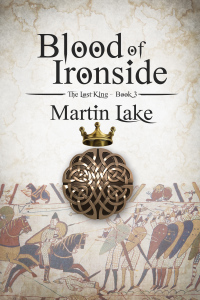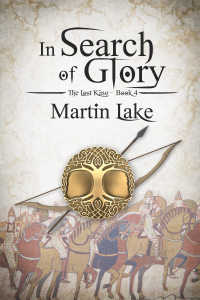Martin Lake's Blog, page 3
March 18, 2016
The Treasures in Notebooks
I have many notebooks. Too many. Long ago I read that authors should keep noteworks and I took the message to heart. I have loads and if I see a new one that I like the look of I can’t resist getting it.
Mostly I manage to keep all my current notes and doodlings in one notebook at a time. But I’m fairly relaxed about keeping lots of notebooks for this reason.
I sometimes find things which I’ve long forgotten and prove to be buried treasure.
A little back-story here. The first novel I ever completed was written in 1990-92. It concerns a spy employed by Francis Walsingham, Elizabeth I’s spymaster. It was nearly published but only nearly. So I put it in a drawer and forgot about it. Now, I’ve looked at it again and find it’s better than I feared. So I’m reworking it with a view to publishing it.
Now, back to notebooks. Today I was idly leafing through an old notebook I’m now using for my French classes. I looked at the first entry and found out it was written very nearly ten years ago. This is what I wrote.
23 March 2006. Barnes, South London
I awoke in the Kensington Close Hotel thinking that I should continue with and finish The Lost King of England. Fears that I have left it too late to be a writer. Then, while wandering round Barnes Pond, I saw a lovely old house which Henry Fielding lived in. Then, a few minutes later, while glancing in an Estate Agent’s window, I saw the oldest house in Barnes advertised. I saw that Robert Beale, Walsingham’s secretary lived there. Then I realised that this was the same house that Fielding lived in and possibly wrote Amelia in in 1750-52. A little later I read in the description that Walsingham himself lived here. Amazing to see his and Beale’s names.
It made me think. I can be a writer. I just need to finish the book. A moment of epiphany. I feel freed up. And it’s a lovely spring morning. The second nice day following this long, drab, dreary winter.
Fears that I have left it too late to be a writer. How wrong could I be?
Well, five years later, on April 18 2011, I published The Lost King: Resistance on Kindle Direct Publishing. I reckon it has sold about 5000 copies since then.

I’ve also published a further eight novels, six on Kindle Direct Publishing and two of published by Lake Union Publishing.
All in all I reckon I’ve sold 45,000 books or more (plus countless borrows.)
So I need not have had those fears. It’s never too late. And my very first novel will finally be published sometime soon.


January 25, 2016
VERY LIKE A QUEEN
January 22, 2016
The Cross and the Curse: Book 2 of the Bernicia Chronicles.
Less than a year ago, Matthew Harffy published his first novel, The Serpent Sword. It was a stunning debut. So much so that I awaited his second novel with some anxiety. Would it be as good?
I was fortunate that Matthew sent me an advance copy and I was instantly captured by a novel every bit as gripping and accomplished as his first. Like the Serpent Sword, the Cross and the Curse is set in in seventh century Northumbria, a land and time of relentless strife and struggle.
It is published today. I recommend you grab a copy.
Here is my review.
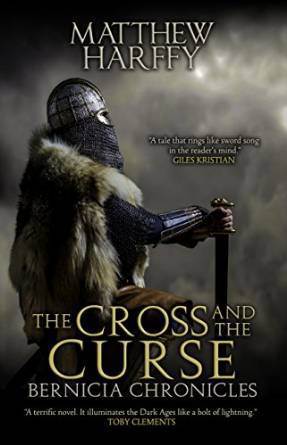
One midnight several years ago I sat at the Great Sphinx listening to love poetry written five thousand years ago. I felt the ache of lost and found kinship with ancient forebears. I feel the same when reading Matthew Harffy’s work.
The best historical fiction enables the reader to simultaneously live in the here and now and the then and there. Matthew Harffy has this skill in abundance. He peoples his work with everyman and everywoman, allowing a bridge across the centuries, a meeting place.
His hero Beobrand is heroic and fallible, his wife Sunniva has the fears and longings of any woman whose young husband is called to battle. Other characters are also very much part of their time while being the sort you might bump into on the street today. King Oswald, for example, has the charisma of a mighty monarch even though his kingdom is a sparsely inhabited, tiny parcel of land. The reader believes Oswald leads a mighty war-host until the author deftly reveals it is made up of merely two hundred men. It is, of course, only two hundred men. Yet at the same time it is a war-host.
While reading The Cross and the Curse I was with the people of seventh century Bernicia as they split timber to make new homes, watched anxiously alongside them to see if the fire would flame enough to send a sacrifice to the gods, felt the terror and thrill of the shield-wall and the disgust and exhilaration of killing while escaping death.
Matthew Harffy’s first novel, The Serpent Sword, was superb. The second book, The Cross and the Curse, is every bit as good. He is one of the most accomplished and exciting voices in the field today. I love his novels and recommend them to you.


January 19, 2016
The Palaces of Henry VIII and François I
Kings and lord knew the value of art. Medieval monarchs had spent vast amounts supporting the church, giving away huge swathes of land, endowing religious orders and, most spectacularly of all, helping pay for the construction and embellishment of churches and cathedrals. These edifices were the spiritual counterpart of the king’s great castles. But they were also things of beauty, jewels of artistry and extravagance.
Renaissance kings preferred to show off their magnificence by building palaces.
Henry VIII of England owned perhaps 55 palaces, more than any English monarch before or since. 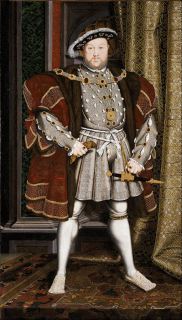
I’m not sure if he ever visited all of them, certainly he spent most of his reign in the south of England only venturing north once. Many of these great palaces are still standing and can be visited. Others are decayed, in ruins or have disappeared.
The most famous of his palaces are Hampton Court Palace, Greenwich Palace, the Tower of London, Whitehall and Nonsuch Palace. Go here http://onthetudortrail.com/Blog/2010/11/28/king-henry-viiis-palaces-royal-houses/ for more information or check out Simon Thurley’s book: The Building of England. How the History of England has shaped our buildings (William Collins, 2013).
The King of France, François 1 was an almost exact contemporary of Henry. They were sometimes allies, more often enemies and the greatest of rivals. But in the grandeur and ambition of his palace building François outdid even Henry.
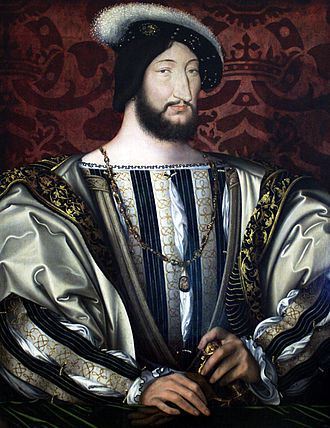
He embellished his childhood home, Château d’Amboise, and brought Leonardo da Vinci to live there. He renovated Château Royal de Blois for his wife, Queen Claude, rebuilt the Palais du Louvre on the banks of the Seine and, when he got tired of that, built the Château de Boulogne to the west of Paris. He spent prodigious amounts on his favourite palace, the Château de Fontainebleau.
But he is perhaps best remembered for the glorious Château de Chambord. 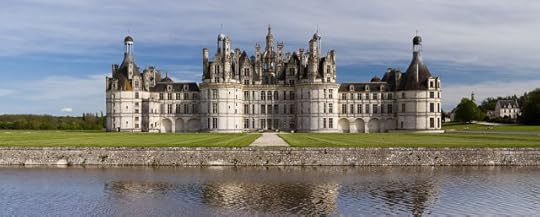
It’s the largest château in the valley of the Loire and took twenty-seven years to build, although it was never actually completed. What is perhaps even more astonishing is that Chambord’s function was as a hunting lodge and François spent little more than two months there in total.
As Mel Brooks says in History of the World: Part 1 – “It’s good to be the King.” (Whether that King was François 1, Henry VIII or Brooks’s Louis XVI.)


January 13, 2016
984 BCE
If my arithmetic is correct then 984 BCE was three thousand years ago. Twice as long ago as the fall of the western Roman Empire. Ten times further back than the start of the Georgian Age in Britain, the death of Louis XIV of France, the Sun-King, the birth of the poet Thomas Grey and the great garden designer Capability Brown.
But because we’re now going so far back in time records are elusive and not to be trusted. So I’m going to cheat a little by casting my net over the half century between 1000 BCE and 950 BCE.
Here goes.
There were an estimated 50 million people living in the world.
This was the period when the middle east was slowly recovering from the Bronze Age Collapse which had led to a two hundred year period during which many of the most ancient states of the world were destroyed. Iron weapons were now becoming the norm.
India contained a number of powerful Iron Age kingdoms.The Shang dynasty in China was replaced by the Zhou.
The powerful Hittite Empire has collapsed. It is possible that three kings ruled Israel in this half century: Saul, David and Solomon. Ancient Iranians entered what would become Persia and the forebears of the Latin people began to migrate into Italy. Egypt was still recovering from the incursions of the Sea Peoples. In 894 BCE Osorkon the Elder becomes the first Pharaoh of Libyan origin.
The Assyrian Kingdom, one of the longest-lasting and most resilient nations of all time, had survived the Bronze Age collapse better than most but was now beginning a century of comparative decline. But never fear, this remarkable people bounced back again and got ready to conquer its third and greatest empire. Or, should I say, always fear. The Assyrians were one of the most ferocious and successful empire builders of any time. Think Genghis Khan with a civilised streak.
On a less blood-thirsty level, rice began to be cultivated in Japan. On a spiritual level, the great prophet Zoroaster may have been born. Or maybe some time over the next four hundred years. (See what I mean about elusive dates.) In Kenya there is evidence of farming. The Phoenicians may have invented the first alphabet at about this time.
The first known trousers or pants seem to have appeared in China, probably introduced by horse-riding peoples from the steppes.

Next time. 1,984 BCE – or very much thereabouts.


January 7, 2016
The Year 16 CE
There’s little information about this year. In Rome it would have been known as year 769 Ab urbe condita, the 769th year since the founding of Rome.
The Emperor Augustus has been dead for two years and Tiberius is getting to grip to his new position of master of all he surveys. His beady eye was everywhere.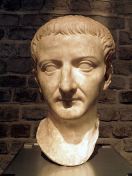
This year was also termed as the year of the consuls Sisenna Statilius Taurus. There’s not a lot known about the consul but several years later his son seems to have been accused of sorcery and committed suicide.
The other consul of this year was called Lucius Scribonius Libo. He was married to the grand-daughter of Pompey the Great. Possibly a bad choice of wife. He was accused of plotting against Tiberius. After a trial, where he was presumably found innocent, he was stabbed to death by Tiberius. Allegedly.
Another death was that of a man called Clemens who claimed to be Agrippa, the grandson of Augustus. He marched on Rome but Tiberius captured and tortured him. It is said that Tiberius asked him, “How did you become Agrippa?” and Clemens replied “The same way you became Caesar.” Possibly a bad choice of words.
In the north of Europe Tiberius’s nephew Germanicus was busy fighting against the Germans. Germanicus died fairly young. He may have got on the wrong side of, you’ve guessed it, Tiberius and he died in mysterious circumstances. His son became Emperor, the scary Caligula. His younger brother, Claudius also became Emperor and a star of stage and screen.
Germanicus also got involved in the endemic warfare between Rome and its great rival the Parthian Empire. The King of Kings in 16 CE was Artabanus III. He was possibly almost as nasty a character as Tiberius. Both lived long and prospered.
Further east, the Kushan empire was expanding across Afghanistan into India. The King in the year 16 was called Heraios. The culture of the Kushan appears to have been a real melange, with influences from Iran, India, the steppes and the Hellenistic world. This coin shows something of this.
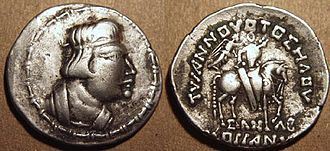
It could almost be Greek but the king’s deformed head is a trait of the Kushan people. I think there’s something a little Tudor about it.
In Mesoamerica the Zapotec empire was flourishing with its main centre at modern day Monte Albán.

Next up – and here’s where I had to get a calculator to check my numbers – is the year 984 BCE. A year of trousers.


January 2, 2016
1016 and all that
The start of a new year seems a good time to take a really long, backward look at history. I’m going to do this in one thousand year leaps. So today, here are a few things which happened in the year 1016.
Earthquakes hit Jerusalem and partly destroy the Dome of the Rock.
In England, Aethelred the Unready dies and is succeeded by his son, Edmund Ironside.
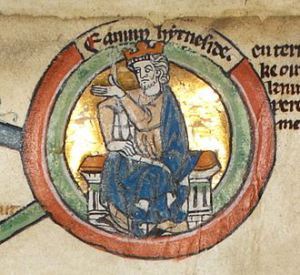
Ironside defeats Canute of Denmark in battle in April and, in his turn, is defeated by him in October. Both young kings agree to divide England between them.
In November Ironside dies, possibly murdered, possibly by Eadric the Grasper, one of the greatest villains of English history. Interestingly, given the 14th century picture of Ironside to the right, he may have been murdered while sitting on the toilet.
Canute becomes king of England, adding it to his Danish lands which became the core of a large Empire including Norway.
Ironside’s new born son is spirited away from England and spends most of his life in exile. His son, Edgar, is the last proclaimed king of England.
The Normans begin to gain a foothold in Italy, leading eventually to powerful duchies and Kingdoms.
The repercussions or many of these events are played out in my The Lost King books.
Next up – The year 16. And then going ever back in time.


December 12, 2015
Starting Over
This seems an appropriate title for this post as it’s been a while since I last posted. But it really refers to the fact that I’ve written 30,000 words of my newest novel and realised that I could improve it greatly by starting with a new focus. It means a large, though not total rewrite.
A few years ago I might have been upset at having to jettison all that work. Now I am delighted. This is because I know that the novel will be much better for the change. I think it also says something about the way I approach my writing.
I’ve learned an immense amount from writing the novels I have, by reading some wonderful new work and by becoming involved in a very creative editing process with my Lake Union editors.
The new book? I’m not going to say much about it – in case I have to make even more fundamental changes. But it’s set way back in the past, nearly 4,000 years ago. Not a Norman, Saxon or Viking in sight.
Talking of Normans and Saxons, the fourth book in my The Lost King series has just been published. It’s called In Search of Glory and can be found here: myBook.to/Glory. http://www.amazon.com/Search-Glory-Lost-King-Book-ebook/dp/B0168W4QW6/ref=asap_bc?ie=UTF8
The first three books are now available in paperback as well.
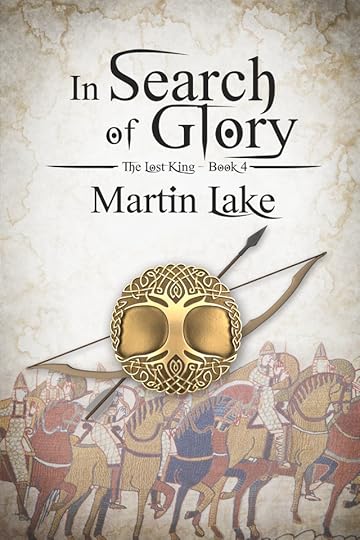
And, if you’re wondering if I’m totally immersed in the ancient world you might be interested to know that a second book about Alice Petherton will be published in late January 2016. You can pre-order it now by following this link: myBook.to/VeryLikeAQueen http://www.amazon.com/Very-Like-Queen-Martin-Lake-ebook/dp/B013P1NTEO/ref=asap_bc?ie=UTF8
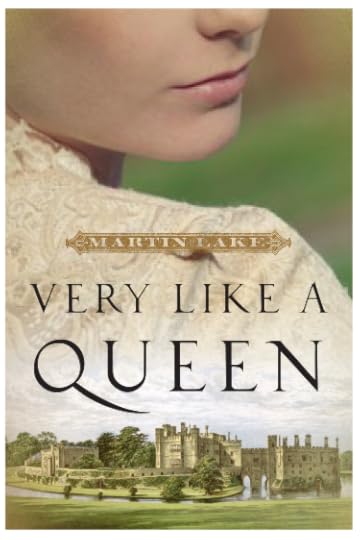
Finally, as the year wends to a close, huge thanks to everyone who has bought my books, written reviews, encouraged and cheered me and become my friend. I really appreciate it.
Happy holidays everyone.


September 6, 2015
Big School
Fifty years ago today I went to Secondary School.
The school was Newbold Green Secondary Modern and it was a life-maker. My Junior Schools had been hell-holes with teachers who were either nonentities who I cannot now recall or out and out sadists who I recall all too well, even today.
Newbold Green was not like that. It was a nice school, in modern buildings (probably crammed with asbestos) with lots of windows and pleasant fields surrounding it.
Better yet it had some inspired and inspirational teachers who lit the fires in me and several of my friends.
I had only been at the school a few months when I wrote a story from the point of view of a Guy on a bonfire and decided that I wanted to be a writer.
Later on I decided that I wanted to be a teacher. I have achieved both of these ambitions and was pleased that my first teaching practice was at my old school where I was reintroduced to many of my old teachers.
The great ones were great, the mad ones still mad.
In particular, I thank Mr Johnson, Mr Dunkley and Miss Hobson, my English teachers. And there were others who were as important.
Best of all I met many new friends who coloured and shaped my life. I blame a couple in particular for what I have become!
To commemorate this anniversary I’m making my collection of short stories The Big School free this week. I forgot to do it for today but it will be available tomorrow. Which is kind of nice because I started school on a Monday.
The stories in it are a mixture of fact and fiction, reality and morbid legend. I hope you enjoy them. You can find them here:
http://www.amazon.co.uk/Big-School-Our-Eric-ebook/dp/B005MJHB92/ref=asap_bc?ie=UTF8
and here:
http://www.amazon.com/Big-School-Our-Eric-ebook/dp/B005MJHB92/ref=asap_bc?ie=UTF8


April 19, 2015
My new novel #SampleSunday #Historical
Phew, it’s been a long journey but my new novel about Alfred the Great will shortly be available on Amazon Kindle. I’ve posted two extracts on the blog already. Here’s another.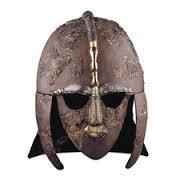
The war-band were standing quietly now on the northern ridge of the hill. They looked towards the west but considering that the newcomers seemed to be their friends they seemed strangely sombre.
The neighing of the horses was louder now and Ulf could hear the sound of their hooves pounding along the timber path which led from Lyng.
And then they appeared. Twenty men, fully armed on powerful steeds. Two men rode at the front, one in a scarlet cloak of finest weave, the other in a tattered grey cloak spattered with mud. The horsemen careered to a halt and the two leaders slid from their horses and looked around.
The eyes of the man in the filthy cloak darted everywhere: taking in the island, the hut, Cenred���s warriors waiting in line, the watery and marshy land around them and the men posted on the mump to the east. He brushed his hands through his hair and nodded. The man by his side turned to their followers and ordered them to dismount.
He must be a rich lord, Ulf thought, staring at his costly garments. Beneath his cloak he wore a mail-shirt with no tunic to cover it. A long sword hung from a thick leather belt which was studded with gem-stones. A rich lord indeed.
The other man looked ill-favoured in comparison. He flung back his cloak but he wore no mail-shirt beneath, only a mud-stained padded tunic in forest green. On his belt hung a small sword in a stained scabbard and a hunting knife. His leggings were tattered and torn as if had spent weeks running through briers and thick thorns. He looks more like a peasant than a warrior, Ulf thought. But he was riding at the head of the column so he must be important. Perhaps he���s the rich lord���s companion.
���Is there any sign of the Danes?��� the man asked Cenred.
���None, my lord,��� Cenred answered. ���The surrounding land seems deserted.���
Ulf frowned. Can this man be a lord as well? Surely he���s too drab and poor?
���Does anybody live here?��� the man continued. His voice had an authority which his appearance lacked. ���In that hut, perhaps?���
Cenred nodded towards Brand and his family. ���Just these five.���
The man gave them a brief glance and then turned to Cenred. ���I shall need their hut. Give them a tent for shelter.���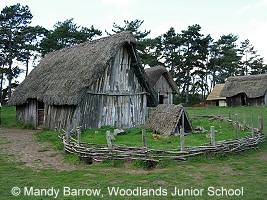
Cenred nodded.
���What about food?��� the man asked.
���These people have very little,��� Cenred said. ���We took hay for our horses but did not touch much of their store.���
���Then we must hunt and fish and forage,��� said the man. ���Perhaps the peasant can help. He must know the lay of the land.���
Cenred turned and gestured Brand to approach closer. The family drifted after him, reluctant to let him go closer on his own. Ulf hurried to walk by his father���s side.
The man in the scarlet cloak stared at them as they approached. He looked shrewd and thoughtful. The sort of man who made swift judgements and was rarely mistaken in them. He examined them closely, especially Brand. And as he looked at the two women he frowned.
The man in the the threadbare clothes paid no attention to the family. It was as if his mind had now moved far away. By his form and figure he looked to be about thirty years of age. But his face looked older, worn and weary as if the troubles of the world were hanging from his shoulders. He had hair as yellow as summer corn but his eyes were dark as hazelnuts.
���My lord,��� said Cenred. ���The peasant and his family.���
The man stirred as if waking from a dream and looked at Brand.
���You live here?��� he asked in a mild tone. He seemed not to notice his battered face.
���I do,��� Brand said. ���This is my land. These men are scum and deserve to die.���
Hild reached for Brand���s arm to try to calm him but he shrugged her off. The man���s mild look had been replaced by one of surprise which looked ready to turn to anger.
���You have no right to be here,��� Brand said, stepping closer and staring into the man���s eyes.
���He has every right to be here,��� said the man in the scarlet cloak. ���This is Alfred, King of Wessex.���
Ulf blinked in astonishment.
Brand turned towards the warrior and then back to the poorly-dressed man. ���The King?��� he mumbled.
Alfred nodded. ���For the moment, at any rate.���
The new book will be available shortly.



